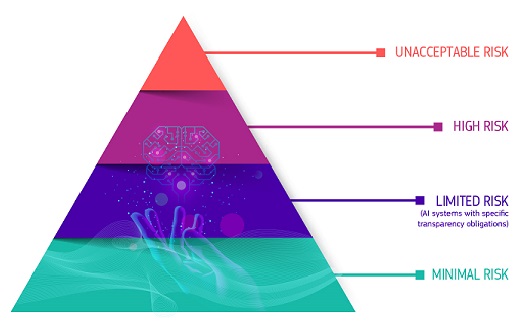In the rapidly evolving field of drug discovery, predicting drug-target interactions (DTIs) has emerged as a critical challenge for researchers and pharmaceutical companies. A recent study introduces a novel approach, known as DeepMCL-DTI, which leverages multi-channel deep learning integrated with an attention mechanism to enhance the accuracy of DTI predictions. This advancement could significantly streamline the drug development process, potentially leading to faster and more efficient therapeutic solutions.
Model Architecture and Training Method
The traditional methods for DTI prediction often rely on limited datasets and simplistic models that struggle to capture the complex relationships between drugs and their target proteins. In contrast, DeepMCL-DTI utilizes a sophisticated architecture designed to analyze multiple types of biological data simultaneously, including drug structures, protein sequences, and various biological interactions. This multi-faceted approach allows for a more nuanced understanding of how drugs interact with different targets.
Central to the success of DeepMCL-DTI is its multi-channel approach, which treats various data types as independent input channels. This architecture enables the model to concurrently process diverse data streams, capturing intricate patterns that would likely be missed by single-channel systems. Such a perspective is particularly vital in drug discovery, where a drug’s efficacy can be context-dependent, influenced by factors ranging from molecular structure to biological pathways.
Moreover, the integration of an attention mechanism enhances the model’s predictive power by allowing it to weigh the importance of different input features selectively. This adaptability is crucial in situations where the relationship between a drug and its target is not straightforward, thereby increasing the likelihood of identifying viable drug candidates.
Benchmark Performance and Evaluation
In their research, Zhou, Guo, Shi, and their colleagues implemented a comprehensive experimental setup to validate the effectiveness of DeepMCL-DTI. By benchmarking the model against standard DTI prediction methods, they demonstrated marked improvements in both accuracy and reliability. The findings were not only statistically significant but also highlighted the potential for DeepMCL-DTI to realign priorities in drug discovery efforts.
A standout feature of this study is its extensive dataset, encompassing a wide range of drug-target pairs sourced from publicly available databases. This robust foundation for training the model ensured that it could learn from diverse examples, ultimately enhancing its applicability across different therapeutic areas. Furthermore, the results suggested that DeepMCL-DTI could prioritize drug candidates for further testing with unprecedented efficiency. By accurately predicting potential interactions, researchers can focus their resources on the most promising candidates, thereby optimizing the drug discovery workflow.
Research Significance and Applications
The implications of DeepMCL-DTI extend beyond mere prediction; they herald a new age of personalized medicine. By integrating various biological data sources, the model can provide insights tailored to specific patient populations or disease states. This customization is essential as healthcare continues to shift towards more individualized approaches, ensuring that treatments are not only effective but also safe across diverse demographic groups.
While the study presents a groundbreaking advancement in DTI predictions, challenges remain, particularly concerning the integration of multi-channel inputs, which requires substantial computational resources. This could limit accessibility for smaller research institutions. However, the authors remain optimistic that advancements in computational technology and cloud-based solutions will mitigate these hurdles.
In conclusion, the introduction of DeepMCL-DTI represents a significant leap forward in computational biology and drug discovery. By fusing multi-channel deep learning with attention mechanisms, this study enhances the ability to predict drug-target interactions and paves the way for a more efficient, personalized approach to drug development. As the research community refines these models and expands their applications, we may soon witness a transformative shift in how new medicines are conceived and delivered.
The future of drug discovery looks promising with such innovations on the horizon. Reducing the R&D timeline can ultimately lead to new therapies that tackle diseases with unprecedented efficiency. As researchers explore the utility of this approach, it could reshape the landscape of pharmaceutical research, ushering in an era characterized by rapid developments and breakthroughs in medicine.
Furthermore, considering the real-world applications of DeepMCL-DTI, potential opportunities arise in various infectious diseases and cancers that have long resisted treatment. By identifying new target interactions and evaluating existing drugs, the model could expedite the repurposing of medications, providing immediate options for urgent public health crises. We stand on the brink of a new frontier where artificial intelligence and machine learning not only accelerate drug discovery but also transform the very nature of health and disease management.
Subject of Research: Predicting drug-target interactions using multi-channel deep learning.
Article Title: DeepMCL-DTI: predicting drug-target interactions using multi-channel deep learning with attention mechanism.
Article References: Zhou, H., Guo, Y., Shi, X., et al. DeepMCL-DTI: predicting drug-target interactions using multi-channel deep learning with attention mechanism. Mol Divers (2025). https://doi.org/10.1007/s11030-025-11402-4
Image Credits: AI Generated
DOI: https://doi.org/10.1007/s11030-025-11402-4
Keywords: Drug-target interactions, deep learning, attention mechanism, multi-channel learning, personalized medicine.
 Paperpal Surpasses 3 Million Users, Boosting Ethical AI in Academic Writing
Paperpal Surpasses 3 Million Users, Boosting Ethical AI in Academic Writing AI Chatbots Encourage Conspiracy Theories, New Study Reveals Concerning Findings
AI Chatbots Encourage Conspiracy Theories, New Study Reveals Concerning Findings AI Struggles with Humor: Research Reveals LLMs Misinterpret Puns with 20% Accuracy
AI Struggles with Humor: Research Reveals LLMs Misinterpret Puns with 20% Accuracy AI Model Exposes Risks by ‘Hacking’ Training Process, Reveals Anthropic Study Findings
AI Model Exposes Risks by ‘Hacking’ Training Process, Reveals Anthropic Study Findings AI’s Double-Edged Sword: Study Warns of Health Disparities in Neurological Care
AI’s Double-Edged Sword: Study Warns of Health Disparities in Neurological Care



























































